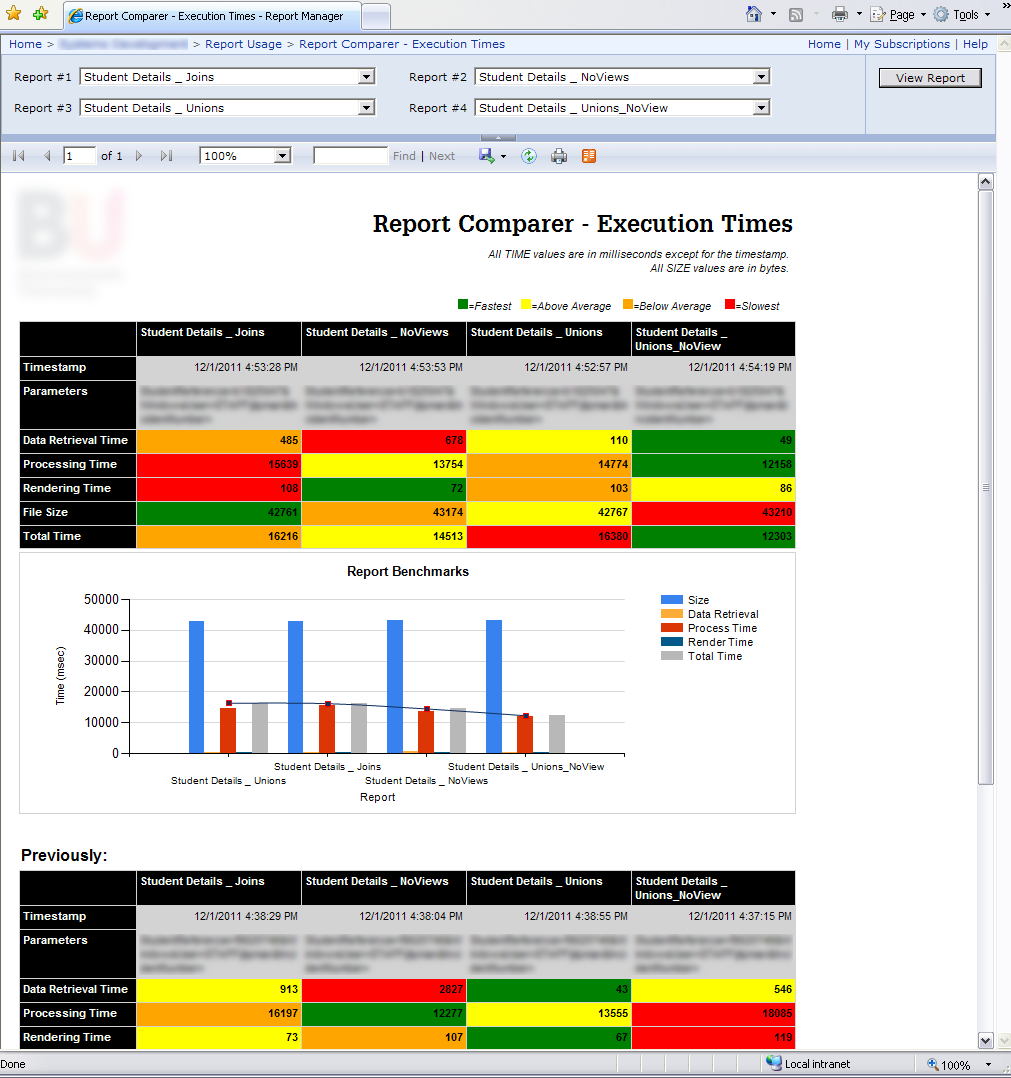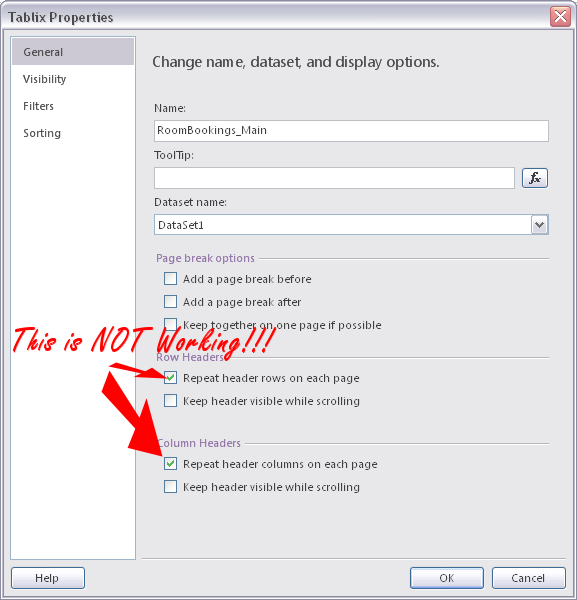Performance Report - Background colors based on dataset values
- Joel Lipman
- SQL Server Reporting Services
- Hits: 14008
I've recently written a report for SQL Server Reporting Services 2008 R2 (SSRS) which will compare up to 4 reports and will compare the time taken for each one. The breakdown or what I was able to measure with the default installation are the times taken for "data retrieval", "processing", "rendering", and then the totals of these.
I haven't Googled this at the time of print so there may be a million better solutions out there, this is just how I did it. This may look like a horrible report which would fail an accessibility test but visually it says straight away which is the better report; and when comparing to the previous runs (using a second dataset) you can tell where changes were made and how this affected the reports' performance.
What?
What I'm trying to do is display a set of results (comparing various reports) in a table and then to color the backgrounds based on whether they are the fastest or slowest in the set.
Something like:













